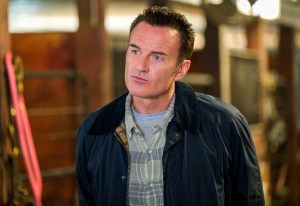Buckingham Palace has announced that Queen Elizabeth has died at the age of 96. Many will likely be wondering what happens next in this very solemn situation, and the answer to that is Operation London Bridge. This is an outlined plan that the British monarchy has had in place for many years, which guides officials on how to handle the late queen’s funeral and memorial.
The first thing that happens, per Politico, is “D-Day.” This is how the day that the Queen died will be referred to, with all following days being designated as D+1 and D+2 and so forth. Next comes the “Call Cascade,” which is a series of phone calls made to senior members of parliament informing them of the sad news. This would now involve contacting Liz Truss, the U.K’s new prime minister. There will also be an email sent to senior civil servants that may read something to the effect of, “Dear colleagues, It is with sadness that I write to inform you of the death of Her Majesty The Queen.”
Videos by PopCulture.com
An official statement is then made by the royal household to the staff, civil servants, and the public, informing all of the Queen’s death. After this, the flags flying across Whitehall in London are to be lowered to half-mast. A Press Association news wire would then go out, and any pilots who are mid-air would inform passengers at that time. The Ministry of Defence would then arrange gun salutes, and a moment of silence would be observed. Truss, as the new prime minister, would be the first government official to make a statement on the late queen’s death, and it does not appear that at this time she has done so.
Interestingly, the D-Day guidelines also require that both the royal family’s website and the U.K government website are to display black banners, and their social media pages (Facebook, Instagram, Twitter, etc.) are also expected to add black banners. “Non-urgent content must not be published,” the report says. “Retweets are explicitly banned unless cleared by the central government head of communications.”
The following day, on D-Day+1, at 10 a.m., Prince Charles — the Queen’s eldest child — will be proclaimed the new sovereign by the Accession Council, who will meet at St. James’ Palace for the occasion. Queen Elizabeth’s state funeral will not come until D-Day+10. It will be held at Westminster Abbey, and there will also be a national day of mourning, as well as a two-minute silence to be held across the United Kingdom at midday. After the funeral, the Queen will be interred at Windsor Castle’s King George VI Memorial Chapel.









